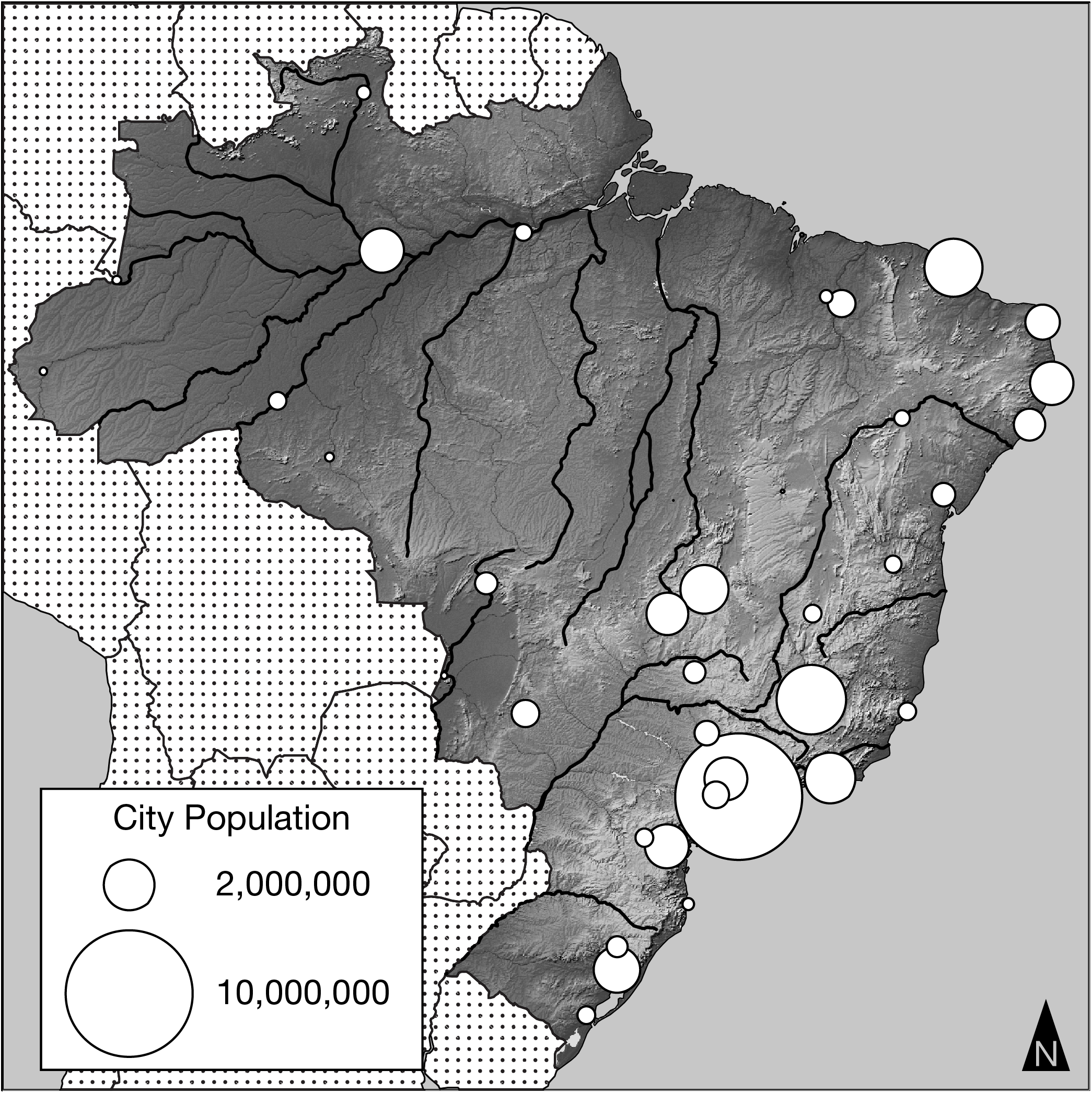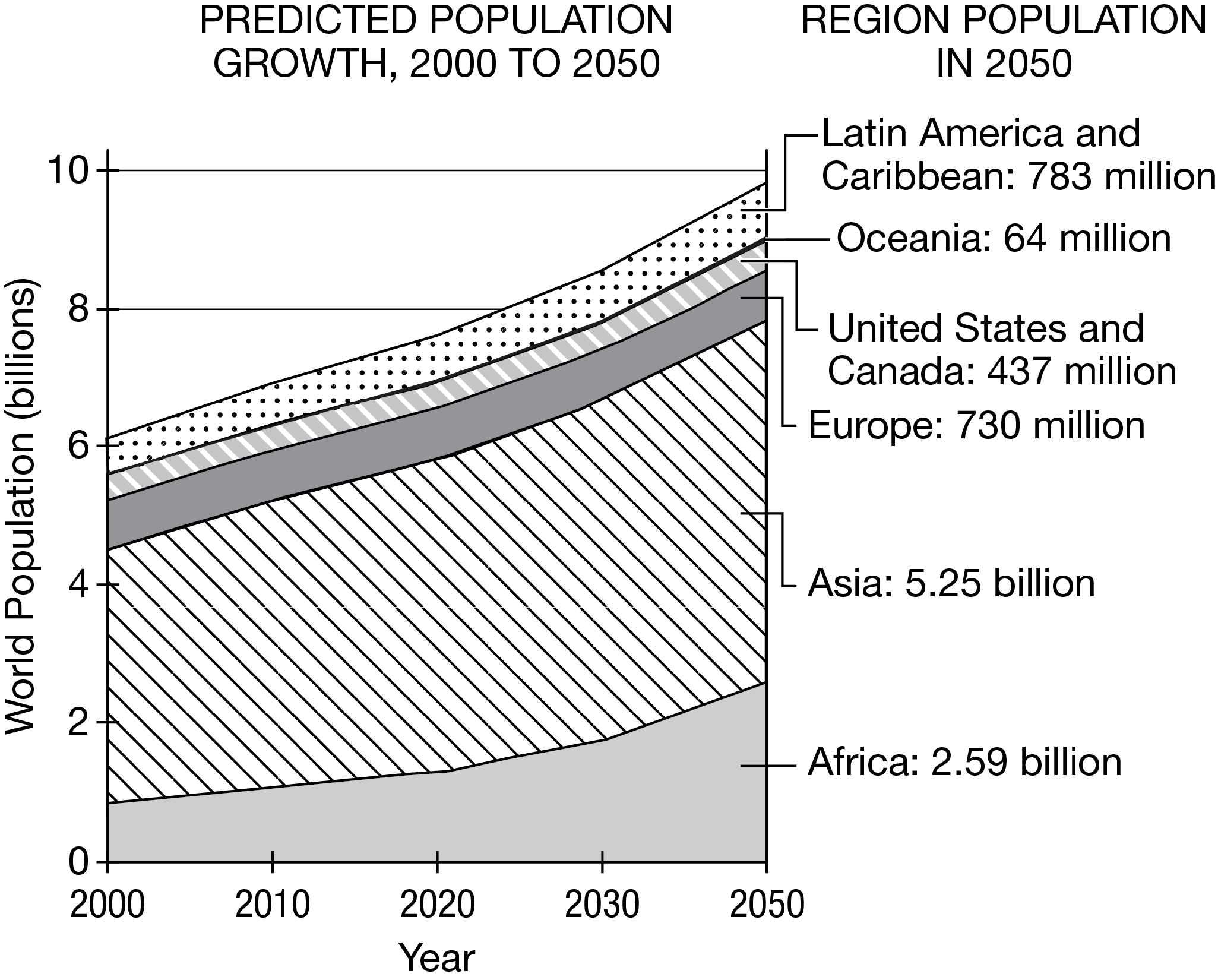AP test review
1/32
There's no tags or description
Looks like no tags are added yet.
Name | Mastery | Learn | Test | Matching | Spaced |
|---|
No study sessions yet.
33 Terms
Which of the following describes a concern for a country with an aging population?
As the proportion of older people in the country increases, fewer young workers are available to contribute tax revenues to support programs that provide services to the older population.
Country A is a more developed country with a low birth rate, a low total fertility rate, a high life expectancy, and a high percentage of urban population. Based on this information, which of the following outcomes is most likely to occur in Country A?
Pressures on pension and social security programs are at critical levels as the number of elderly increases.
Which of the following would be most likely to increase life expectancy in a less developed country, resulting in an aging population in that country?
Improvements in access to health care and sanitation
Which of the following types of migration are correctly explained by the example given?
International migration and voluntary migration: Family A from Mumbai has convinced their close friends Family B to emigrate to London as they did in order help start up their business.
In 2018, a large number of migrants from Afghanistan and Iraq applied for asylum in the European Union. Which of the following is a pull factor that explains this migration?
Armed conflict, driving many people from their home regions in the Middle East
The international Syrian refugee crisis that started in 2011 is best explained by which of the following migration factors?
A political push factor from Syria, where armed conflict imperils personal safety
Which of the following best explains a likely effect of Brazil’s population distribution?
Uneven economic development as eastern Brazil experiences more growth than the sparsely inhabited western regions
Which of the following explains why a country with a high physiological density (e.g., Japan, Egypt, or the Netherlands) risks exceeding its carrying capacity?
The population places a large amount of pressure on the arable land to produce enough food without risking severe environmental degradation.
The increasing percentage of urban dwellers in more-developed countries is best explained by
an abundance of arable land for agricultural use
Which of the following explains a significant positive impact that the immigration of large populations of Chinese people had on places like Vancouver and Los Angeles?
Chinese immigrants established businesses and religious centers that provided their new cities with greater access to elements of Chinese culture such as arts, cuisine, and religion.
Which of the following explains the major effect of migration flow to Southwest Asia from other regions in Asia?
Guest workers migrate to the region for jobs in construction and the oil fields, increasing the volume of exports from the region.
The early United States population was predominantly Protestant. In the nineteenth century, urban populations became increasingly Roman Catholic, especially in the cities of the Northeastern United States. This shift in the pattern of religion was caused by
transnational migration from Ireland, southern Germany, and Italy
There has been an increase in asylum seekers from Syria to the European Union in recent years. Which of the following best describes the reason for this migration?
A continuing issue of conflict and political unrest within Syria
A refugee enters the European Union in Italy and is temporarily housed in Germany. He is then granted asylum and is permanently settled in Sweden. Which of the following describes this type of migration that is facilitated by the European Union’s open border policies?
Step migration across member states to a final destination
Which term best describes the majority of voluntary migrants from South Asia to the Persian Gulf countries of Bahrain, Qatar, and Kuwait during the 1990s and 2000s?
Guest workers
Which of the following best explains why, in the late eighteenth and early nineteenth centuries, Thomas Malthus proposed his population theory?
Malthus theorized that, if left unchecked by regular cycles of famine and misery, population would increase beyond the ability to feed itself.
In the early part of the Industrial Revolution in Europe, Thomas Malthus developed a theory that population increases exponentially, while food production can increase only arithmetically. Which of the following statements best explains how the Industrial Revolution reduced the threats forecast by Malthus?
The resulting rural-to-urban migration for jobs in factories led to a decline in birth rates and lowered population growth rates below what Malthus predicted.
In which of the following contexts could a neo-Malthusian perspective most successfully explain population characteristics?
A country with a high rate of natural population increase, where food supplies are at risk
Which of the following best describes a country with a rate of natural increase of 0.4 ?
slower population growth
In many less developed countries, only a small percentage of school-aged youth attend school regularly. In some cases, fewer females than males are enrolled in schools. Which of the following patterns is a concern in less developed countries with low school enrollment?
A lack of qualified males and females to develop a workforce that will improve economic growth
Which of the following types of countries are most likely challenged with the problems associated with a large youth-dependent population, such as providing public primary education for all children?
Less developed countries

The map shows the number of people per unit of land. Which of the following types of data are shown in the map?
Arithmetic density

Which of the following describes information a geographer could identify from the map of urban populations in Brazil?
Patterns of arithmetic density within specific regions

Which of the following best identifies the data for the Eastern Great Rift Valley, shown on the map?
high arithmetic density
The low birth and death rates for a country in stage 4 of the demographic transition model are best explained by
the level of urbanization and technological advancement of a more developed country
Which of the following explains the pattern of growth in City B relative to City A ?
City B is located in a less developed country and has high rates of rural-to-urban migration, whereas City A is located in a more developed country and has low rates of rural-to-urban migration.

Based on the graph, predicted population growth in which of the following regions is explained by a high total fertility rate?
Africa
Which of the following explains an unintended consequence of China’s antinatalist one-child policy?
A projected shortage of working-age people to care for the rising elderly population, resulting in an increase in the cost of living for older people.
Which of the following country demographics would be used to explain the need for the pronatalist policies shown?
A country with a birth rate of 11, a death rate of 13, and a rate of natural increase of −0.2 , legislates tax credits for working parents
Country X has a high youth-dependency ratio. Country Z has fears of running out of agricultural resources. Which of the following explains why Countries X and Z would implement anti-natalist policies?
Antinatalist policies promote family planning strategies to reduce fertility rates and discourage population growth.
Based on the data shown, which of the following describes the most likely population context for the countries listed?
Stage five of the demographic transition model due to very low birth rates
Which of the following countries is best described as being at Stage 3 of the demographic transition model?
Bolivia: birth rate = 24 , death rate = 7
Which of the following describes the most likely cause of death for a citizen of a country in stages 4 and 5 of the demographic transition model?
Degenerative diseases due to old age and lifestyle